Abstract
A number of marine bacterial isolates from both near-shore and open-ocean environments were tested for growth inhibition with exposure to low concentrations (1 to 100 μg/liter) of Aroclor 1254, a commercial mixture of polychlorinated biphenyls (PCBs). Of over 17 bacterial cultures tested, growth of only two open-ocean isolates, one a pseudomonad and the other a tetrad-forming coccus, was consistently inhibited by Aroclor at concentrations as low as 10 μg/liter (10 ppb). Growth inhibition was dose dependent over a concentration range of 10 to 100 μg/liter. The effects upon division rates and final cell yields of each bacterial isolate were greatest when PCBs were added to cultures with low cell densities or with lower specific growth rates. The pseudomonad also had reduced carotenoid levels and an altered filamentous morphology with Aroclor present at a concentration of 10 μg/liter, or more. The effects noted were reversible for at least 18 h after initial exposure. Concentrations of Aroclor in excess of those needed to stop growth had no detectable effect upon the respiration rate of cells of either culture. This suggests that the reduced division rates observed were not due to inability of PCB-treated cells to transport or catabolize the carbohydrate or amino acid substrates tested.
Full text
PDF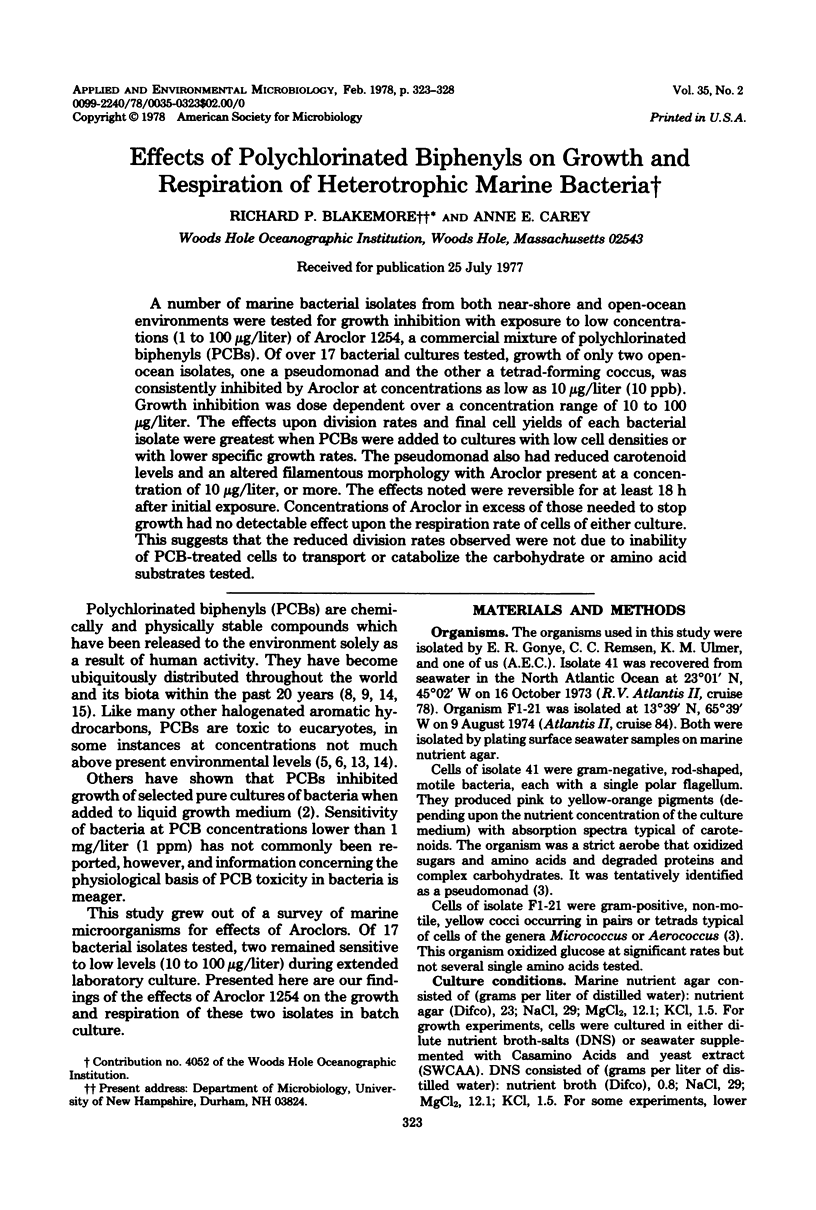
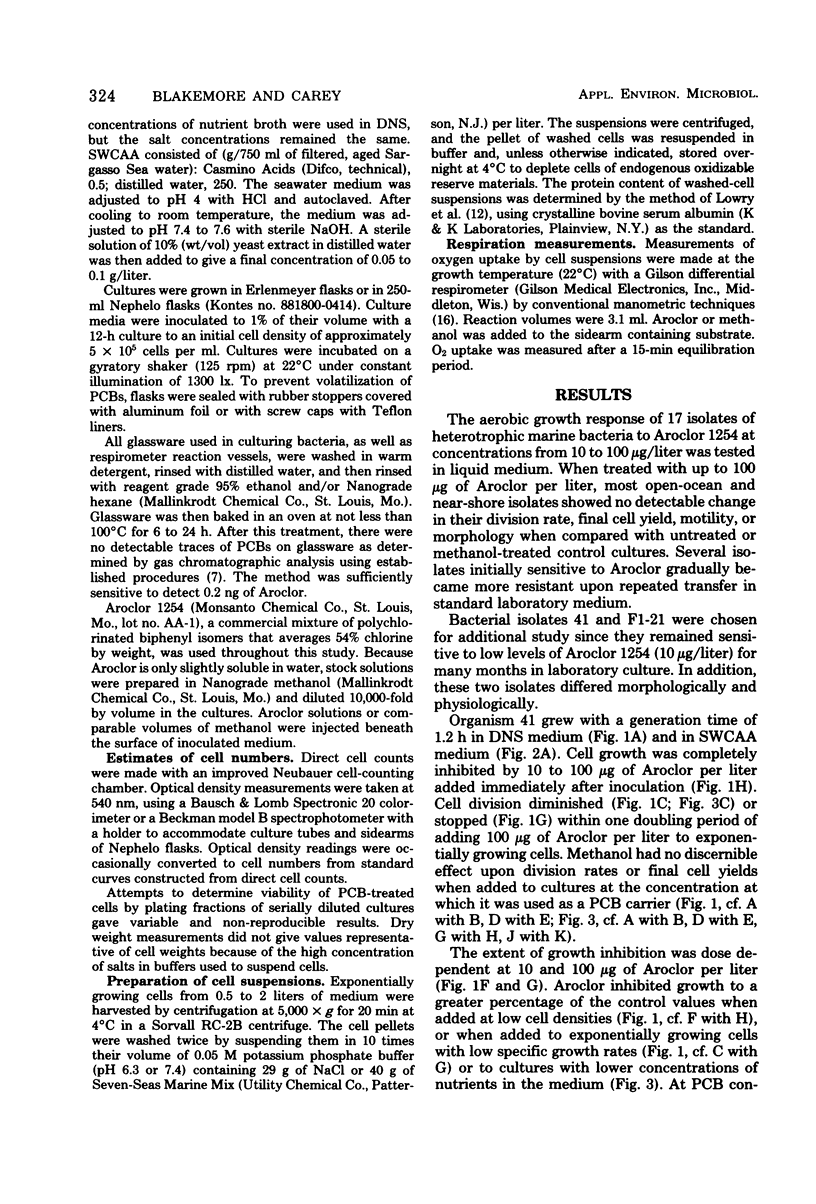
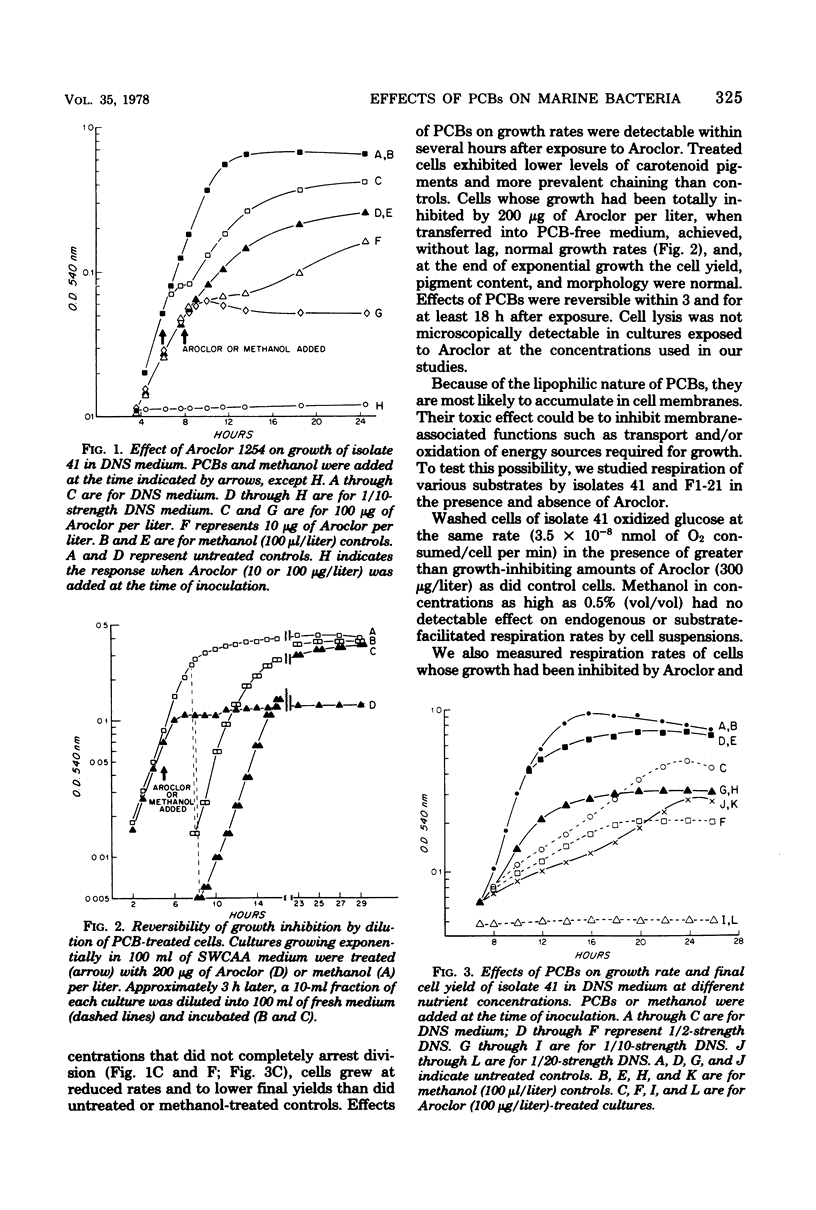
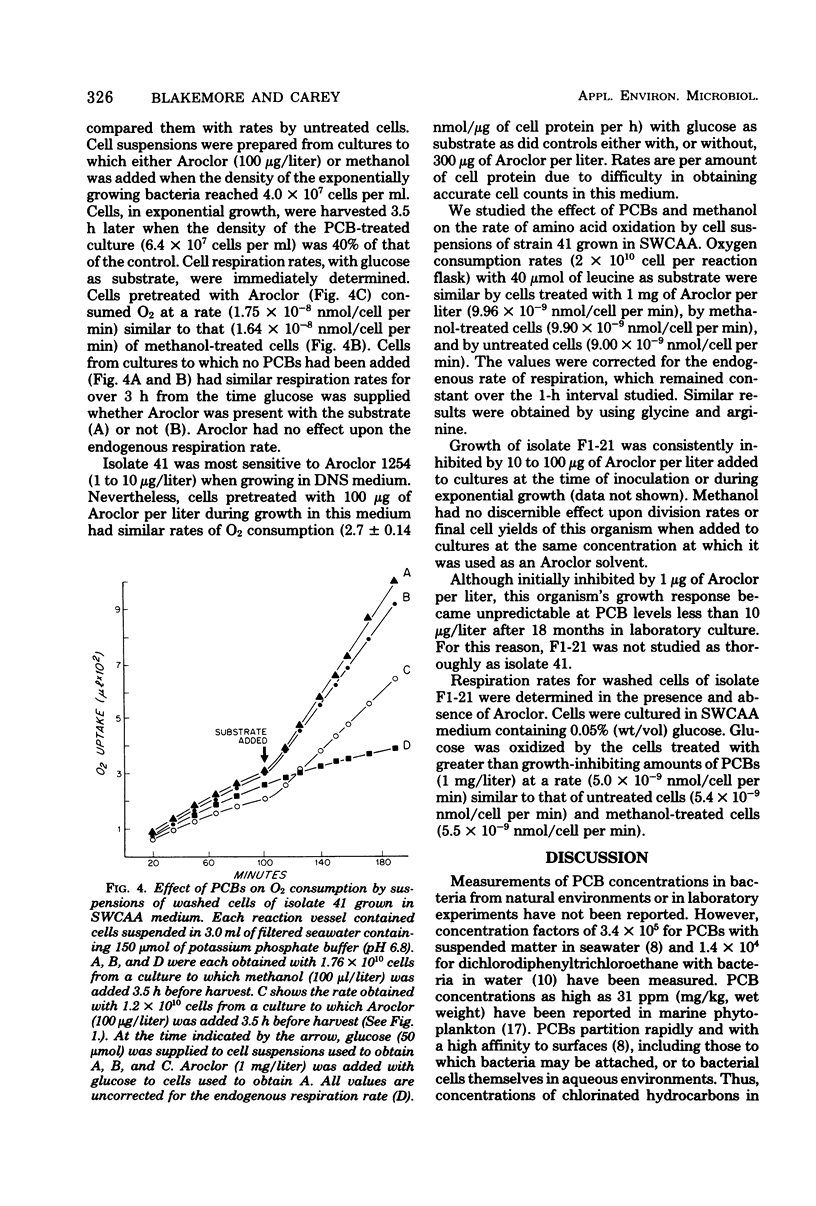
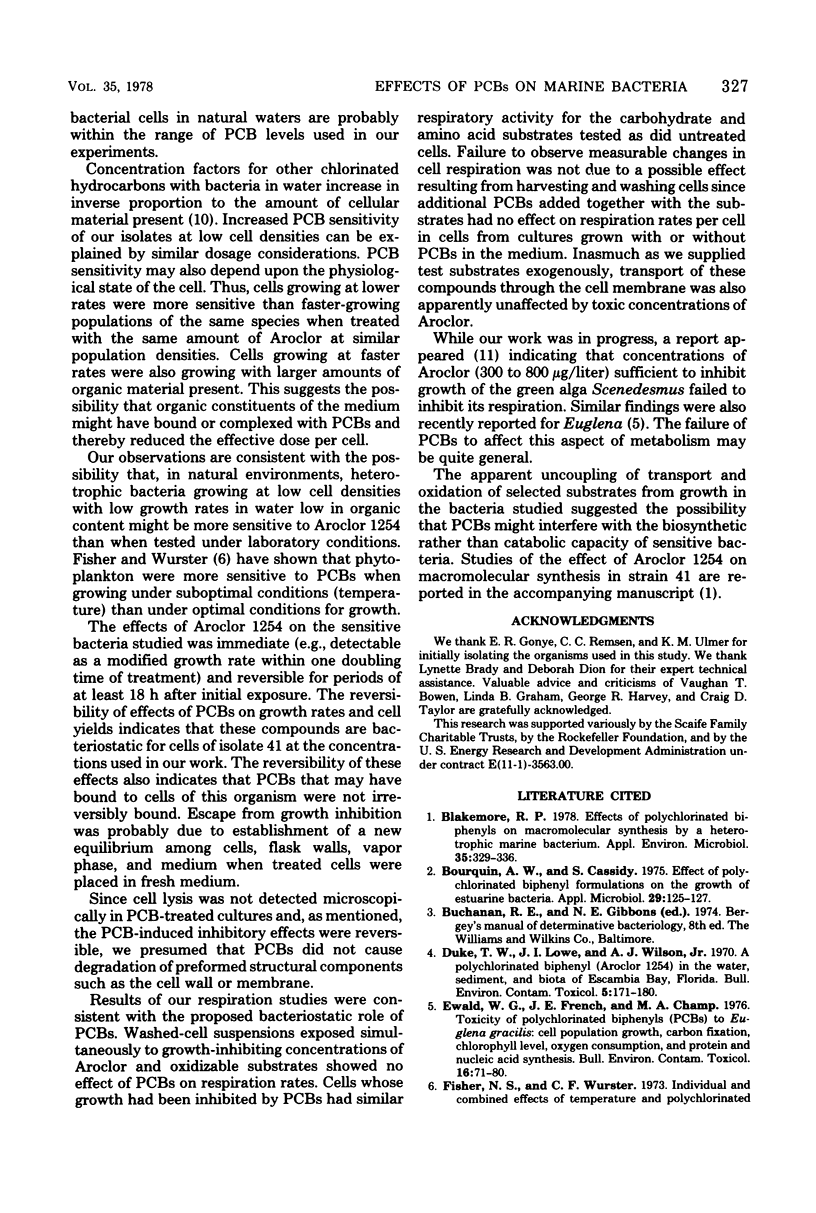
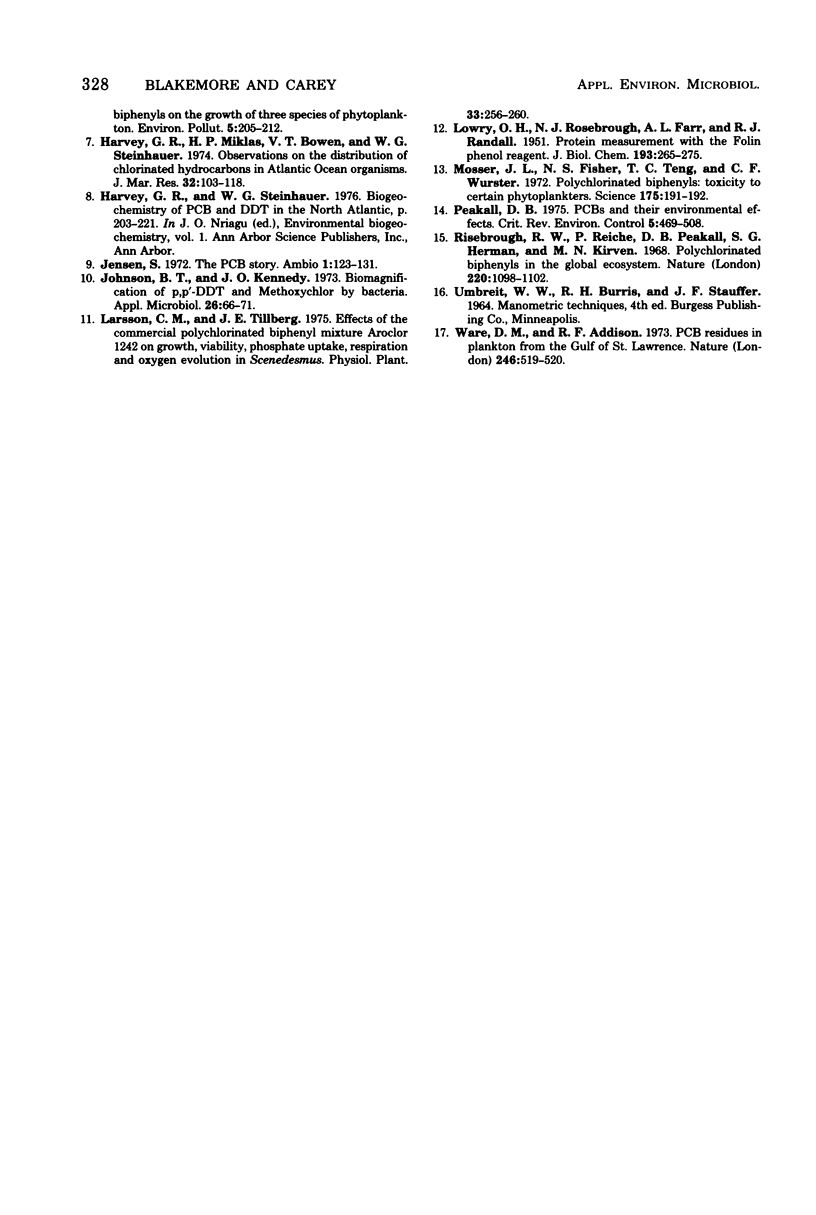
Selected References
These references are in PubMed. This may not be the complete list of references from this article.
- Blakemore R. P. Effects of polychlorinated biphenyls on macromolecular synthesis by a heterotrophic marine bacterium. Appl Environ Microbiol. 1978 Feb;35(2):329–336. doi: 10.1128/aem.35.2.329-336.1978. [DOI] [PMC free article] [PubMed] [Google Scholar]
- Bourquin A. W., Cassidy S. Effect of polychlorinated biphenyl formulations on the growth of estuarine bacteria. Appl Microbiol. 1975 Jan;29(1):125–127. doi: 10.1128/am.29.1.125-127.1975. [DOI] [PMC free article] [PubMed] [Google Scholar]
- Ewald W. G., French J. E., Champ M. A. Toxicity of polychlorinated biphenyls (PCBs) to Euglena gracilis: cell population growth, carbon fixation, chlorophyll level, oxygen consumption, and protein and nucleic acid synthesis. Bull Environ Contam Toxicol. 1976 Jul;16(1):71–80. doi: 10.1007/BF01753108. [DOI] [PubMed] [Google Scholar]
- Johnson B. T., Kennedy J. O. Biomagnification of p, p'-DDT and methoxychlor by bacteria. Appl Microbiol. 1973 Jul;26(1):66–71. doi: 10.1128/am.26.1.66-71.1973. [DOI] [PMC free article] [PubMed] [Google Scholar]
- LOWRY O. H., ROSEBROUGH N. J., FARR A. L., RANDALL R. J. Protein measurement with the Folin phenol reagent. J Biol Chem. 1951 Nov;193(1):265–275. [PubMed] [Google Scholar]
- Mosser J. L., Fisher N. S., Teng T. C., Wurster C. F. Polychlorinated biphenyls: toxicity to certain phytoplankters. Science. 1972 Jan 14;175(4018):191–192. doi: 10.1126/science.175.4018.191. [DOI] [PubMed] [Google Scholar]
- Risebrough R. W., Rieche P., Peakall D. B., Herman S. G., Kirven M. N. Polychlorinated biphenyls in the global ecosystem. Nature. 1968 Dec 14;220(5172):1098–1102. doi: 10.1038/2201098a0. [DOI] [PubMed] [Google Scholar]
- Ware D. M., Addison R. F. PCB residues in plankton from the Gulf of St Lawrence. Nature. 1973 Dec 21;246(5434):519–521. doi: 10.1038/246519a0. [DOI] [PubMed] [Google Scholar]


